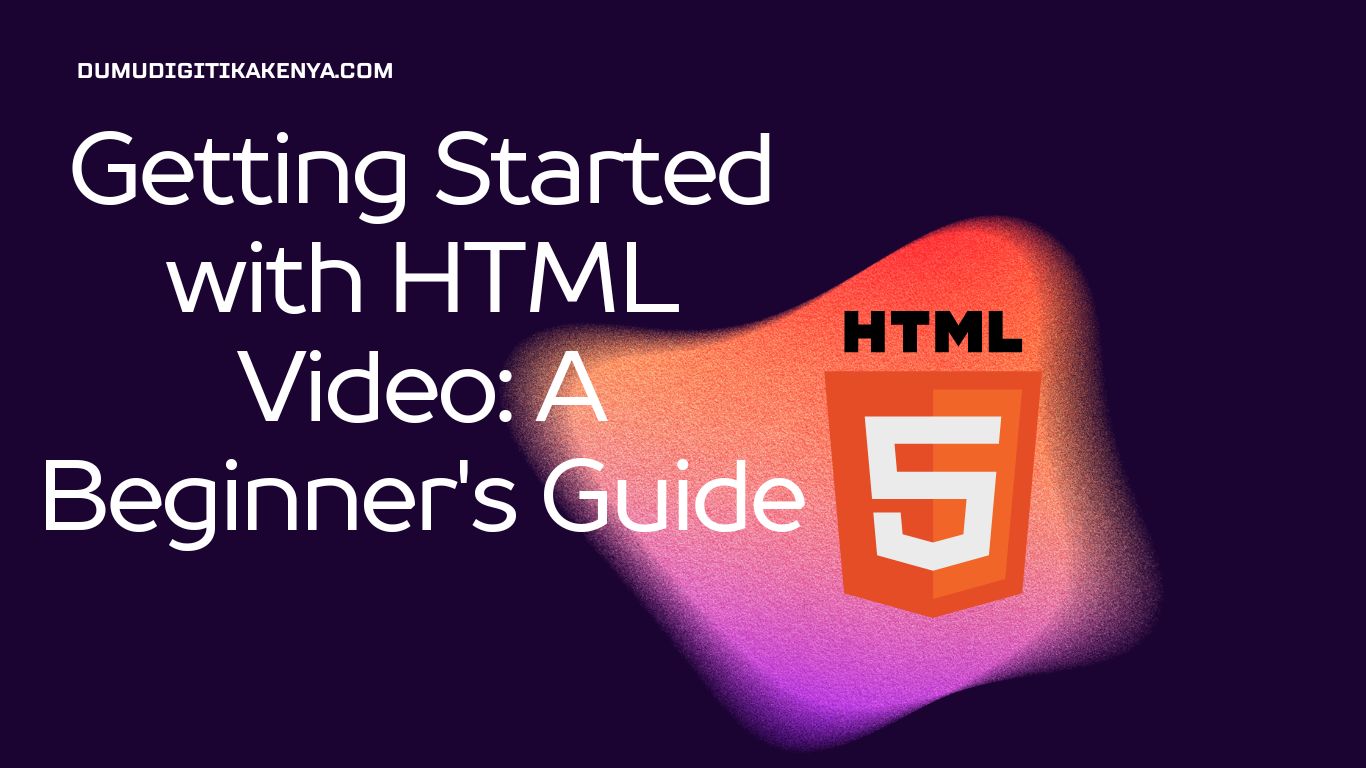Introduction To HTML Video
In today’s digital age, multimedia content is a crucial component of any engaging and interactive website. One of the most common forms of multimedia content is video. If you’re a budding web developer or simply looking to enhance your website with captivating video content, you’re in the right place. Welcome to our comprehensive HTML Video Tutorial, where we’ll walk you through the fundamental steps of incorporating videos into your web pages effortlessly. By the end of this tutorial, you’ll have a solid understanding of how to use the HTML <video> element to seamlessly integrate videos into your web projects and captivate your audience with compelling visual content.
Why HTML Video Matters
In the vast landscape of web development, HTML (Hypertext Markup Language) serves as the cornerstone for building web pages. HTML’s versatility extends to multimedia integration, and understanding how to harness its power is essential. Our HTML Video Tutorial will equip you with the skills necessary to wield the <video> element effectively. Whether you’re creating a personal blog, an e-commerce platform, or an educational website, knowing how to embed, style, and control video playback within your HTML documents is a valuable asset that can elevate your web presence.
What to Expect
Throughout this tutorial, we will provide you with step-by-step instructions, accompanied by illustrative code snippets and explanations, ensuring that you grasp each concept thoroughly. From selecting the right video file formats to controlling playback and applying custom styles to your videos, we’ve got you covered. By the end of this journey, you’ll have the confidence to create web pages enriched with captivating videos that are compatible across various browsers. So, let’s dive into the world of HTML video and start creating engaging and dynamic web content that leaves a lasting impression.
Prerequisites
Before diving into HTML video, make sure you have a basic understanding of HTML, as this tutorial assumes some prior knowledge of HTML tags and attributes.

Table of Contents
1. HTML Video Element
The HTML video element, <video>, is used to embed video content on a web page. It supports various attributes that allow you to control the appearance and behavior of the video.
2. Video File Formats
Before you can add a video to your web page, you need to ensure it is in a compatible format. The most widely supported video formats on the web are MP4, WebM, and Ogg. Make sure your video file is in one of these formats for cross-browser compatibility.
3. Adding a Video to Your Web Page
To add a video to your HTML page, follow these steps:
<!DOCTYPE html>
<html>
<head>
<title>HTML Video Example</title>
</head>
<body>
<h1>My Video</h1>
<video width="640" height="360" controls>
<source src="myvideo.mp4" type="video/mp4">
<source src="myvideo.webm" type="video/webm">
Your browser does not support the video tag.
</video>
</body>
</html>Explanation:
- The
<video>element is used to embed the video. widthandheightattributes set the video’s dimensions.- The
controlsattribute adds video controls (play, pause, volume, etc.). <source>elements specify different video formats for browser compatibility.- The text inside
<video>serves as a fallback message for unsupported browsers.
4. Controlling Video Playback
You can control video playback using JavaScript or the built-in attributes of the <video> element. Here’s an example of using attributes:
<video controls autoplay loop muted>
<source src="myvideo.mp4" type="video/mp4">
</video>autoplay: Starts the video automatically when the page loads.loop: Makes the video replay continuously.muted: Mutes the video by default.
5. Styling Your Video
You can apply CSS styles to your video element just like any other HTML element. For example, to center the video, use CSS:
<style>
video {
display: block;
margin: 0 auto;
}
</style>This CSS code centers the video horizontally on the page.
Conclusion
In this comprehensive HTML Video Tutorial, we’ve embarked on a journey to demystify the art of incorporating video content into your web projects. From the basics of the <video> element to controlling playback and styling, we’ve covered the essentials to empower you to create captivating web pages. Understanding HTML video is not merely an option; it’s a crucial skill for modern web development, as it allows you to engage your audience with immersive multimedia experiences.
As you continue to explore the vast world of web development, remember that the knowledge gained here is just the beginning. The ability to seamlessly integrate HTML video is a stepping stone towards crafting visually stunning and interactive web pages that resonate with your visitors. We encourage you to practice, experiment, and take your newfound skills to the next level. Keep exploring advanced features and consider diving into JavaScript for more interactive video experiences.
In conclusion, this HTML Video Tutorial has equipped you with the tools and knowledge to create web content that stands out in the digital landscape. Harness the power of HTML video to breathe life into your web projects and leave a lasting impact on your audience. Embrace the creative possibilities, and never stop evolving your web development skills. Happy coding!




